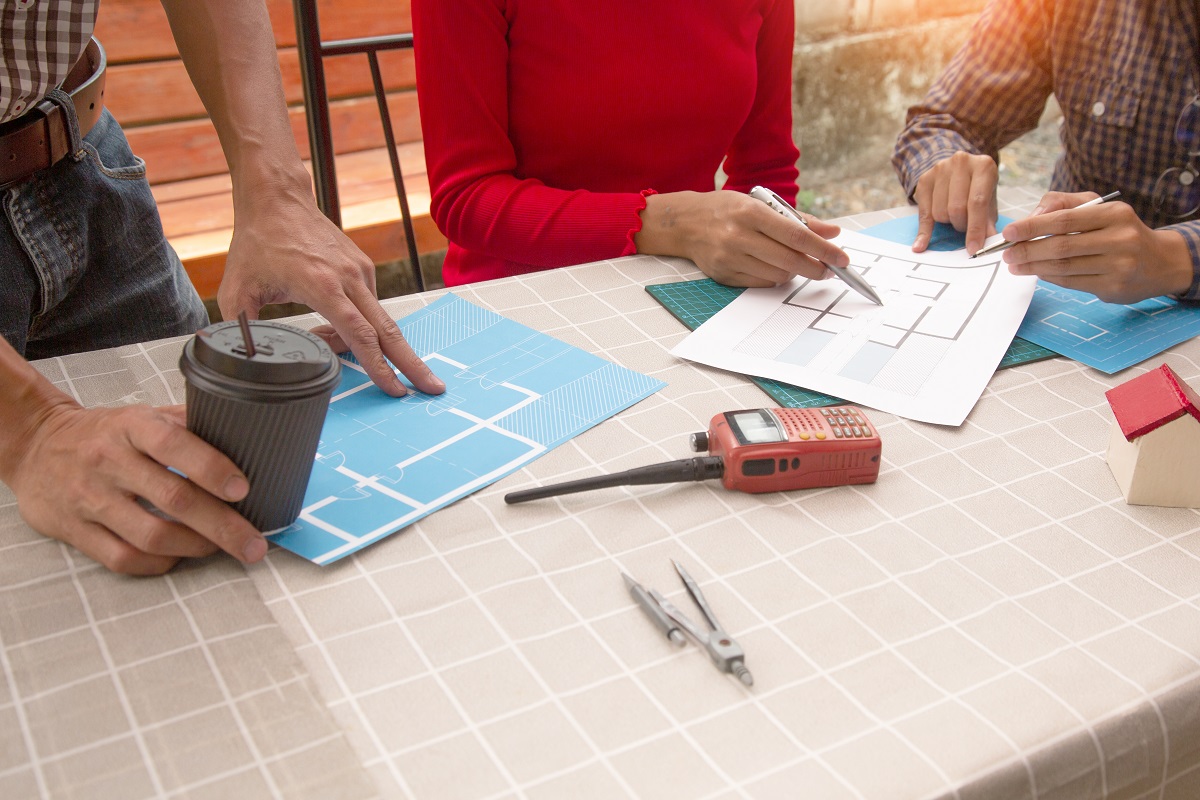Step-by-Step Guide of Interior Design Courses After 12th
If you’ve ever wondered about what interior design involves, its significance in our lives, and the exciting path to becoming an interior designer, you’re in the right spot. We’ll cover different types of interior design courses, ranging from diplomas to undergrad programs like BSc interior design and postgraduate diplomas. Explore the entrance exams you’ll encounter, get to know the fees, and understand the duration and eligibility for various courses. As we discuss the opportunities in the field, you’ll learn about the many job options awaiting you after completing interior design courses post-12th.
What is Interior Design?
Interior design is the art of transforming spaces to make them both functional and visually pleasing. It goes beyond making things look nice; it’s about understanding how people live and tailoring environments to enhance their daily experiences. Whether it’s creating a cozy home, an efficient workplace, or captivating public spaces, interior design plays a crucial role in shaping our surroundings. Professionals in this field carefully plan and curate every element, from furniture to lighting, to create cohesive and harmonious spaces that positively impact our well-being and creativity.
Why Interior Design is Important?
Interior design is vital in our aesthetically driven world, meeting the growing need for beauty amidst life’s challenges. It goes beyond aesthetics, shaping how we live, work, and experience spaces. This transformative art optimizes environments for modern living, blending beauty and functionality seamlessly. Interior design significantly influences moods, productivity, and overall well-being, leaving a lasting impact on our daily experiences. For those considering interior design courses after 12th or pursuing BSc interior design, understanding its importance is key to creatively and professionally transforming spaces.
How to Become an Interior Designer?
Becoming an interior designer involves getting educated, often through interior design courses after 12th or pursuing a BSc in interior design. Whether with a bachelor’s degree or an associate degree, these programs teach design principles and practical skills. After learning the basics, gaining hands-on experience through internships is crucial for refining skills and building a portfolio. Staying updated on industry trends, networking, and considering certifications can further enhance one’s journey in the dynamic field of interior design, where creativity meets technical proficiency in crafting imaginative and practical spaces.
Do you want free career counseling?
Ignite Your Ambitions- Seize the Opportunity for a Free Career Counseling Session.
- 30+ Years in Education
- 250+ Faculties
- 30K+ Alumni Network
- 10th in World Ranking
- 1000+ Celebrity
- 120+ Countries Students Enrolled
Read Also: 5 Tips for Creating a Cozy and Inviting Home
Types of Interior Design Courses
Diploma in Interior Design:
A Diploma in Interior Design, lasting 1 or 2 years, provides a hands-on approach to learning the skills needed for creating both beautiful and functional spaces. The program covers various aspects of designing interiors for homes, offices, or any space. It’s a quick and industry-focused course, moving from ideas to practical design using the latest software like CAD, making it a great starting point for those aiming to enter the field of interior design swiftly.
Undergraduate Interior Design Courses:
If you want to explore interior design more deeply, consider undergraduate programs like BA Interior Design, BSc Interior Design, and BDes Interior Design, which span 3 years. These courses teach you to design comfortable and visually appealing spaces for different settings. By learning to visualize and express your ideas effectively, these programs lay a strong foundation for a career in interior design, covering both basic and advanced concepts to ensure you’re ready to create spaces that meet your clients’ needs.
Book Now →
Post Graduate Diploma in Interior Designing:
The 2-year Post Graduate Diploma in Interior Design is tailored to excel in the field. Covering a range of topics, from materials to 3D visualization, the program enhances both theoretical knowledge and practical skills using industry-standard tools. With a holistic approach, students are encouraged to think creatively, challenge norms, and explore new ways of working, preparing them for a significant role in the ever-evolving field of interior design.
Read Also: Embracing Affordable Luxury
Entrance Exams for Interior Design Course
If you want to get into top-notch interior design courses after the 12th, you’ll need to tackle entrance exams designed to test your design skills and unleash your creative side. These exams, like UCEED, AIDE, JEE Main Paper 2, NID, CEPT, SEED, UID Aptitude Test, IIAD, GD Goenka DAT, and Pearl Academy Entrance Exam, act as benchmarks to evaluate your artistic talent and are the gateways to exclusive interior design programs.
Do you want free career counseling?
Ignite Your Ambitions- Seize the Opportunity for a Free Career Counseling Session.Fee Structure for Interior Design Course
Understanding the costs of interior design courses is important for students planning to enroll. The fees vary depending on the program you choose, accommodating the financial situations of aspiring interior designers. For instance, the BDes (Interior and Furniture) course might cost anywhere from Rs. 2,20,000/- to Rs. 11,50,000/-, providing options for students with different budgets. Similarly, a Diploma in Interior Design can be pursued with fees ranging from Rs. 15,000/- to Rs. 2,00,000/-, ensuring that quality education is accessible across different financial situations.
Duration of Interior Design Courses After 12th:
Diplomas in Interior Design typically range from 1 to 2 years, offering a focused and practical approach to learning essential skills. Undergraduate programs, such as BSc in Interior Design, usually span 3 years, providing comprehensive knowledge in designing functional and visually appealing spaces. For those seeking a more in-depth exploration, postgraduate diplomas in Interior Design might require 2 years, delving into advanced topics and refining both theoretical knowledge and practical skills. These different durations cater to the diverse needs and preferences of students aspiring to pursue a career in interior design.
Read Also: Latest Trends in Smart Home Technology

Eligibility Criteria for Interior Design Courses After 12th:
Meeting specific eligibility criteria is a crucial step toward pursuing a career in interior design. For diploma courses, completing the 12th standard with a minimum of 50% marks is often required. Similarly, undergraduate programs like BSc in Interior design typically demand a 50% score in 10+2 from a recognized stream. For postgraduate diplomas in Interior design, a relevant bachelor’s degree with a 50% score in 10+2 is often a prerequisite. These criteria ensure that students entering different levels of interior design courses have both the educational background and the required percentage for their chosen program.
Read Also: Top 10 Most Important Skills for Interior Designers
Scope for an Interior Designer
If you love being creative and have an eye for aesthetics, choosing interior design can open up a world of opportunities. As cities grow and people’s preferences change, there’s a rising demand for talented interior designers. Completing interior design courses can lead to exciting jobs in homes, offices, retail spaces, and exhibitions. The field goes beyond the usual roles, giving professionals the chance to start their businesses, work as freelancers, or specialize in unique areas like sustainable design. With design trends always evolving and people realizing how interior spaces impact their well-being, being an interior designer is not just about decorating – it’s about shaping and transforming spaces in today’s world.
Job Opportunities as an Interior Designer:
Completing interior design courses after the 12th opens up a bunch of job opportunities for graduates. You could find yourself designing cool and practical spaces or focusing on creating engaging exhibits if you lean towards exhibition design. There are also jobs in architecture, kitchen design, lighting solutions, and furniture design. If you want to get fancy, you can explore roles like architectural technologists or product designers. Whether you start as a junior interior designer or dive into the world of commercial space design, there are plenty of creative paths waiting for you in the field.
Conclusion:
Interior design courses after the 12th opens doors to a creative world of opportunities. Whether pursuing diplomas, BSc interior design, or postgraduate programs, the journey involves learning to transform spaces. With entrance exams, fees, durations, and eligibility criteria, aspiring designers can tailor their education. The vast scope includes roles in homes, offices, retail, and more, with options for entrepreneurship. Completing these courses not only unlocks job opportunities but also positions individuals to shape and transform spaces, contributing to the dynamic field of interior design. Whether starting as a junior designer or exploring commercial spaces, the field offers diverse paths for design enthusiasts.
Read Also: Interior Design Courses After 12th: Admission, Fee, Eligibility & Salary
FAQ
What is the significance of interior design in our lives?
Interior design goes beyond aesthetics, shaping how we live, work, and experience spaces. It optimizes environments for modern living, blending beauty and functionality seamlessly.
How can I become an interior designer?
Pursuing interior design courses after the 12th or opting for a BSc in interior design are common paths. It involves gaining education, hands-on experience, and staying updated on industry trends.
What are the types of interior design courses available?
There are various options, including diplomas in interior design, undergraduate programs like BA or BSc in interior design, and postgraduate diplomas tailored to excel in the field.
What are the job opportunities after completing interior design courses?
Graduates can explore roles in designing homes, offices, retail spaces, exhibitions, architecture, kitchen design, lighting solutions, and furniture design, among others. The field offers diverse paths for design enthusiasts.

AAFT has been providing the world with limitless creativity and expression since 1993! Through a dynamic and industry-driven curriculum, AAFT provides engaging and captivating articles to persuasive blogs and empowers its readers to explore diverse avenues of creative media education-related content.






